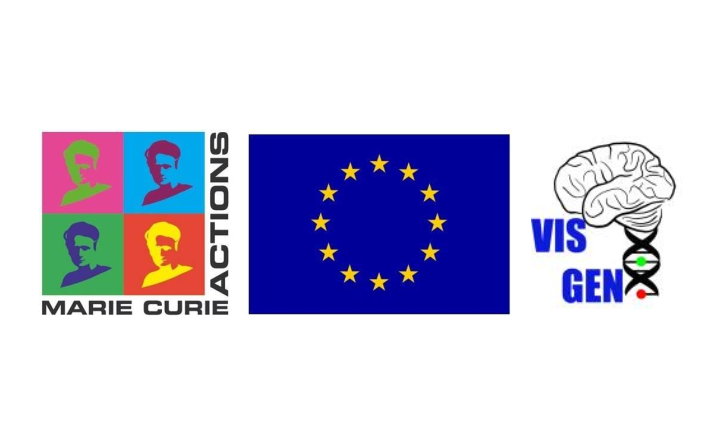Project ID
734862 (H2020-MSCA-RISE-2016)
Project title
Transcribing the processes of life: Visual Genetics
Project manager, contact details
Tóth Krisztián, toth.krisztian@pte.hu
Academic supervisor, contact details
Dr. Sik Attila, sik.attila@pte.hu
Total project budget
792.000 EUR
Total budget of UP
99.000 EUR
Project start date
Project end date
Coordinator
The University of Birmingham (UK)

Partner Organisations
Femtonics Kutató és Fejlesztő Kft. (HU), Magyar Tudományos Akadémia Wigner Fizikai Kutatóközpont (HU), Max-Planck-Gesellschaft zur Förderung der Wissenschaften e.V. (DE), Aston University (UK), Art Photonics (DE), M-Squared Lasers Limited (UK), GlucoSet AS (NO), DITABIS Digital Biomedical Imaging Systems AG (DE), Humeltis Biotechnológiai Kutató-Fejlesztő Kft. (HU), Universitaet Kassel (DE), Envi-Tech Tudományos Műszaki Fejlesztő és Környezetvédelmi Kft. (HU), Universita degli Studi di Padova (IT), Aston Medical Technology Ltd. (UK), Pécsi Tudományegyetem (HU)
General description
A projekt 16 partnerrel valósul meg és a NEURAM elnevezésű projekthez kapcsolódik.
A konzorcium szakértő tagjait az adott tudományos intézetek kémiával, fizikával, neurológiával, viselkedéstudománnyal és genetikával foglalkozó szakértői adják, továbbá a projekt megvalósításában egy, a 3D-s mikroszkópiával foglalkozó ipari partner is részt vesz.
A 4D-SRS rendszerek kiváltképpen orvosi kutatásokra, illetve olyan fejlesztési projektekre lesznek felhasználhatóak, melyek központjában a korai stádiumban levő betegségek diagnosztizálása, rák észlelése, és toxicitással foglalkozó tanulmányok állnak.
A tudományos és a kereskedelmi szektorok tapasztalatcseréje és a kiküldetések révén a csapat növeli európai és globális versenyképességét az idegtudományok és genetikai technológia területén.
Program
Application monitoring
Project ID
734862 (H2020-MSCA-RISE-2016)
Project title
Transcribing the processes of life: Visual Genetics
Project manager, contact details
Krisztián Tóth, toth.krisztian@pte.hu
Academic supervisor, contact details
Attila Sik, Dr. , sik.attila@pte.hu
Total project budget
792.000 EUR
Total budget of UP
99.000 EUR
Project start date
Project end date
Coordinator
The University of Birmingham (UK)

Partner Organisations
Femtonics Kutató és Fejlesztő Kft. (HU), Magyar Tudományos Akadémia Wigner Fizikai Kutatóközpont (HU), Max-Planck-Gesellschaft zur Förderung der Wissenschaften e.V. (DE), Aston University (UK), Art Photonics (DE), M-Squared Lasers Limited (UK), GlucoSet AS (NO), DITABIS Digital Biomedical Imaging Systems AG (DE), Humeltis Biotechnológiai Kutató-Fejlesztő Kft. (HU), Universitaet Kassel (DE), Envi-Tech Tudományos Műszaki Fejlesztő és Környezetvédelmi Kft. (HU), Universita degli Studi di Padova (IT), Aston Medical Technology Ltd. (UK), Pécsi Tudományegyetem (HU)
General description
The Visual Genetics (VISGEN) consortium brings together eight academic and five commercial scientifically leading teams to address the unique challenge of visualizing nuclear processes in intact brain in real-time. By exchanging knowledge between academic and commercial sectors in Europe, as well as undertaking training secondments at leading Universities in China the team will grow its European and global competitiveness in a world-leading forefront of neuroscience and genetic technology. Visualisation of transcription in living systems has not been witnessed directly, this multidisciplinary and international project will herald a new era where this idea becomes a regular research tool and translates to a clinical and diagnostic technology in the future. The team will use a unique biotagging platform to develop the technology that is required to interrogate transcription. The intersectoral effort requires the amalgamation of knowledge from neuroscientists, synthetic chemists, engineers, physicists, analytical chemists, nanobiologists, behavioural scientists, laser technology and image processing experts. The consortium combines expertise from thirteen organisations from seven countries to build the multidisciplinary team and share the knowledge that addresses and will overcome the task of realising real-time and spatially resolved genetic studies. Once developed, the technology can be utilized for other medical-based research and development projects aimed at early stage disease diagnosis, cancer detection, and toxicity studies. Real-time visual genetics will transform our understanding of the state-of-the-art and herald transformative changes in the field of neuroscience, and in general life science.
Program
Application monitoring
